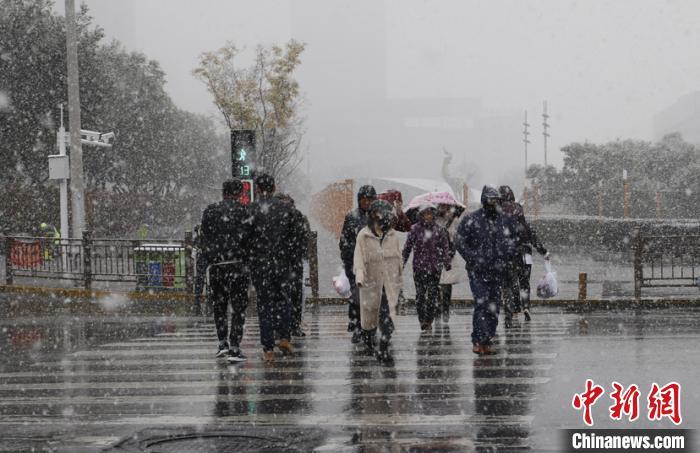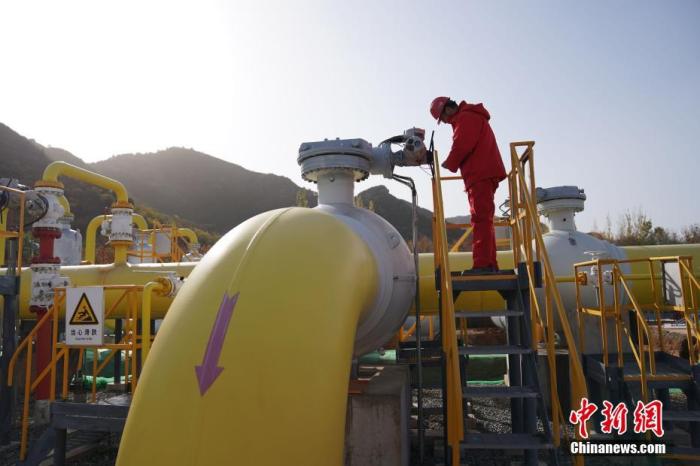In the northern region, the rain and snow are cooling down, and many places in beginning of winter are welcome to start the heating season
Beijing, Nov. 8 (Lang Lang) Today is beginning of winter in the 24 solar terms. For people in the northern region, the feeling of seasonal change is becoming more and more obvious. According to the weather forecast, in the next few days, due to the influence of cold air, there will be rain and snow in most parts of the north, and some parts of the northwest will be accompanied by dust.

Data Map: People in Taiyuan, Shanxi Province wear thick clothes to travel. China News Service reporter Wu Junjie photo
Many places in the north welcome beginning of winter in the rain and snow.
According to the forecast of the Central Meteorological Observatory, from the night of the 7 th to the 11 th, there were small to moderate rains (snow) or sleet from west to east in northern Xinjiang, eastern northwest, north China, Huanghuai and Northeast China, and there was heavy snow or blizzard in the local area; There are 4~6 winds and 7~9 gusts in most of the above areas, accompanied by dusty weather in the local area; The process is cooled by 4~6℃, and the local temperature reaches 8~12℃.
Around beginning of winter (7-10 days), new cold air will strike, which will bring 4 ~ 6℃ cooling to the north, with a wide range of influence, basically affecting most of the north.
According to the China Weather Network, it is expected that there will be a precipitation cooling process from west to east in northwest, north China and northeast China, and there will be light rain (snow) or sleet in northern Xinjiang, and there will be local snowstorms. There is little to moderate rain (snow) or sleet in the central and eastern Inner Mongolia, North China and Northeast China. Most of these areas are accompanied by 4 ~ 6℃ cooling, and the temperature in northern Xinjiang is 8 ~ 10℃.
Specifically, on the 7 th, the temperature in Beijing dropped, with the lowest temperature at night being only 1 C and the highest temperature during the day being 12 C. There is occasional light rain on the 9th night. In Hebei, according to the forecast, from the night of the 9th to the 10th, there will be light rain in the cloudy, central and northern parts of Hebei province and moderate rain in the local area, including light snow or sleet in Zhangjiakou and Chengde, moderate to heavy snow in the local area and light rain or sporadic rain in other areas.

On October 31, Xining City ushered in the first snowfall in the second half of the year. Ma Mingyan
Beginning of winter ≠ When will the real winter come?
Beginning of winter is the 19th solar term in a year and the first solar term in winter, which generally falls on November 7th & mdash; 8th.
Although beginning of winter has arrived, it doesn’t necessarily mean the arrival of winter. In meteorology, the average daily temperature for five consecutive days is below 10℃ as the standard for the start of winter. According to this standard, most parts of northern China have entered winter before beginning of winter, while many parts of southern are still in autumn.
For example, in Northeast China, as early as late October, Shenyang Meteorological Observatory has issued a blue warning signal for cold wave. Since October 25th, the moving average temperature has decreased steadily by 10℃, and it has entered the winter in the meteorological sense, which is 13 days later than the previous year (October 12th) and 1 day earlier than last year (October 26th).
For the northern region, after beginning of winter, cold air activities will gradually become more frequent, and the downward trend of temperature will accelerate. Every time cold air visits, it will bring obvious cooling, strong wind and even rain and snow, and the first snow in some parts of North China often falls at this time. Compared with the north, which is accelerating the pace of winter, it seems that it will take some time for people in the south to feel the cold. According to the Central Meteorological Observatory, it will be difficult for cold air to cross the Yangtze River in the coming week.

November every year to March next year is the heating season in the north, and it is also the peak period of gas consumption. Four "Shaanxi-Beijing pipelines" built from Shaanxi to Beijing by different routes are the "gas supply lifeline" of the capital. The picture shows that on October 28th, employees of Miyun Offtake Station are inspecting the equipment. China News Service reporter Sultan photo
Cold air frequently opens the heating season in many places in North China.
The continuous exertion of cold air has also led to the heating season in the northern region. At present, central heating has been started in many places in North China.
According to the information released by Beijing, on November 7, the regional boiler rooms in Beijing were ignited for trial operation, and the cogeneration heating enterprises basically completed the area investment of residential users of heating network.
In Tianjin, Tianjin follows 2018— After heating in advance in the heating season of 2019, it will be heated half a month in advance again. With the approval of Tianjin Municipal Party Committee and Municipal Government, Tianjin Public Utilities Administration requires all coal-fired boilers to be ignited and started on October 28th, and formally meet the standard for heating on November 1st. From 2018— In the heating season of 2019, the official heating in Tianjin was not only advanced by half a month, but also delayed by half a month, extending the heating period that ended on March 15 to March 31.
In Hebei province, heating season will be started in many places in Hebei province in November. For example, Qinhuangdao will officially provide heating at 0: 00 on November 5, Shijiazhuang will officially provide heating on November 15, and the whole network of the city will reach the standard for heating trial operation on November 10. On November 15, Langfang, Baoding, Tangshan and Cangzhou will officially provide heating.